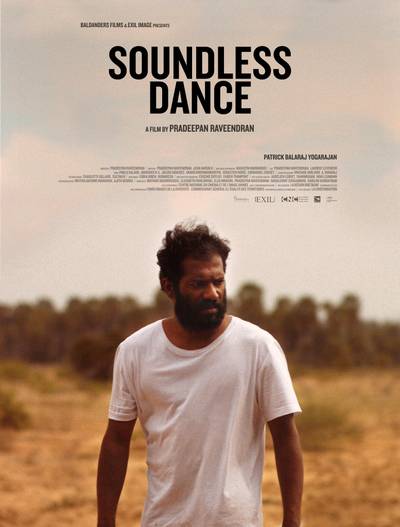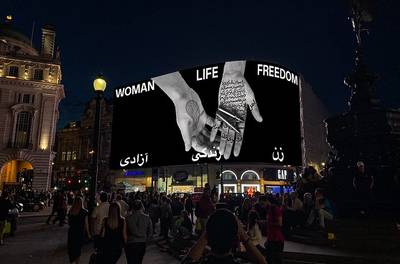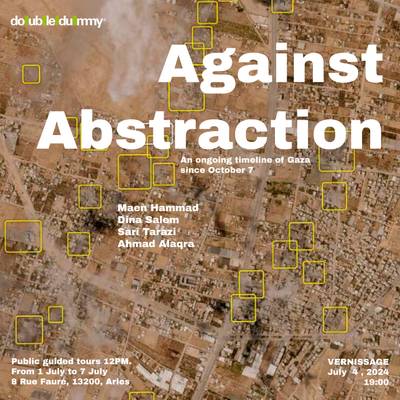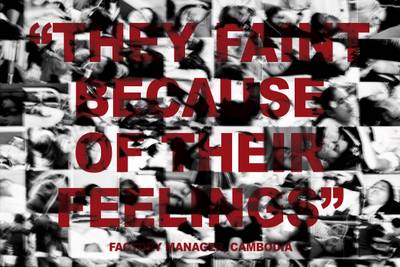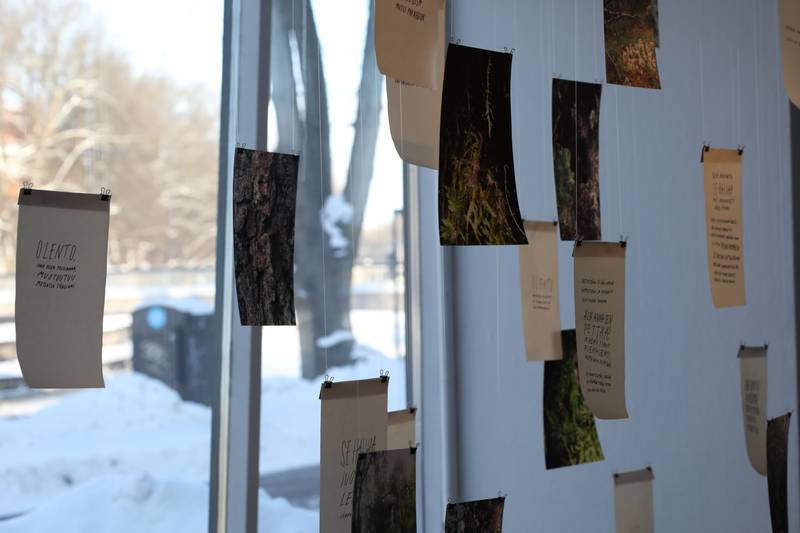

Minkki Nurmi, Metsä, felt pen on paper, photographs, inkjet print
Even Minn is a writer and dramaturg working in the fields of performance and contemporary art. They are fascinated by the dancing body, the spiritual body, the animal body and our shared ancestry with other cellular lifeforms. Their practice is informed by trans feminism and somatics.
To witness an asteroid floating in a gallery space through my smartphone.
To visit a gallery in another city during the pandemic.
Both seem equally surreal. Visiting a gallery in another city even more so.
I’m writing about an exhibition called Gentle Gestures - Non-binary Conceptions of Difference that took place in Titanik Gallery, Turku from 21st of January to 7th of February, 2021. I visited the space twice during the same weekend. My first response to the exhibition was basic level glee. The elation of being able to travel, being able to see an art exhibition in the first place. I pranced around the space in wonder and confusion. Art objects are still being brought together in rooms. My body gets to be here and I don’t know exactly what to make of it.
The glee was accompanied by shadowy thoughts and sadness. How excruciating it is to try and make art accessible to a live audience at this time. Everything seems to be happening in a vacuum of virtually mediated content or not at all. There was one visitor besides me in the gallery, they looked like someone I sometimes chat with in Instagram dms but I could be wrong. They were wearing a mask so it was hard to be sure. I was so overtaken with feelings that had to do with the sheer miracle of being in the space that engaging with the art started out with hesitation. Every exhibition asks to be encountered in its own way and I was asking how. The new reality of not being able to attend art events and exhibitions made me ask this even longer. How should I look, how should I start to look. I had a hard time trying to make sense of the situation, as if the water I was so used to swimming in had transformed into an alien liquid.
The curator Camille Auer is an artist and thinker whose work is often rooted in queer and new materialist theory. She is looking for a saturation point where theory becomes practice. As a starting point for this exhibition she was interested in exploring the concept of non-binary difference. What does a non-binary conception of difference mean? She invited seven artists to respond to her question with a gesture that could be an artwork – or not.
A quote from feminist theorist and filmmaker Trinh T. Minh-ha is offered as a lense to experience the exhibition with: “a non-binary conception of difference is not opposed to sameness, nor synonymous with separateness”.
As I write, I keep revisiting the exhibition on my phone. The revisit is made possible by a virtual tour by artist Flis Holland. The video was uploaded on their Instagram after the exhibition closed down, giving it an afterlife of sorts. It feels comforting to be able to go back and have someone take me through the rooms once again, in an order they chose. The virtual tour is recorded on an asteroid tracking application that makes 3D models of near-Earth asteroids and lets the user bring these celestial rock bodies into their everyday surroundings. In the virtual tour video, an asteroid looms over the artworks, a dark mass of rock with Flis Holland’s narration guiding the viewer around the space, from artwork to artwork.


Minkki Nurmi, Poster
Listening to Flis Holland speak is comforting. Their voice is slow and languid, unamused. In the beginning of the tour they focus on the exhibition poster with Minkki Nurmi’s drawing of a pair of hands holding a ball of fire. They make a point that being in a group show with other artists creates a feeling of safety. That there is a safety in numbers. They speak of their previous career that had to do with observing asteroids. That in this previous life they once had a chance to visit an asteroid simulation in DC during a conference but instead decided to stay in bed. There is a pain in the recollection, a fear of having missed out. It seems as if they are looking for a way to reunite with their past life by bringing the rocks virtually to the exhibition space. The motif of staying in bed aptly fits the current situation in the world. The virtual tour makes it possible for the viewers of the exhibition to stay in bed and witness the exhibition without taking the risk of travel and contamination. Even without the pandemic, visiting exhibitions is not a given. The underlying message of the virtual tour comes to be about accessibility and safety needs.
The looming black asteroid in the middle of the artworks becomes a sympathetic companion. It creates spontaneous framings for the works. Something about the way it sometimes accidentally blocks my view and momentarily prohibits me of seeing other works reminds me of a pet demanding attention. I attribute animal qualities to a rock.
“Whatever it is, it’s not a threat
This isn’t you versus nature”
Holland makes clear they are not interested in the narrative of an approaching meteor about to end human life on Earth. The way they describe it as a ‘long potato’ domesticates it even further. The way the rock is animated makes it look almost weightless. It’s a particle that survived the passage from outer space to earth, but it never landed, never hit anything. The app suspends it to the air forever.
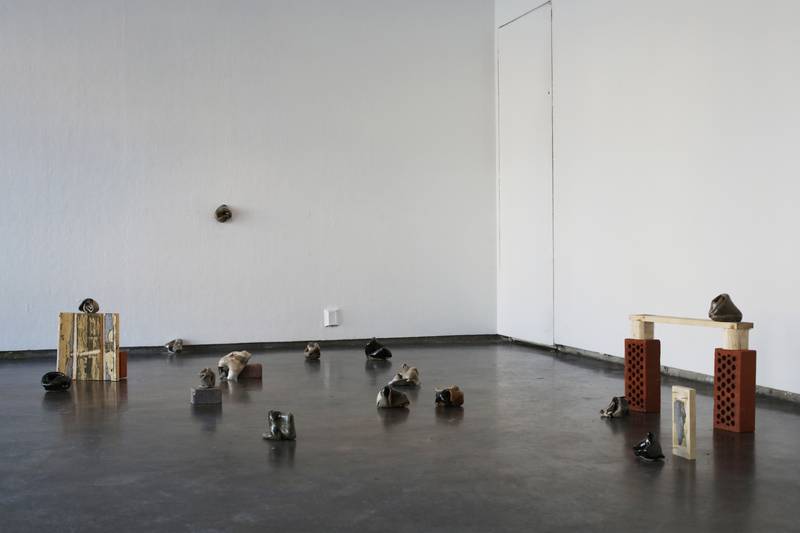

Eero Yrjölä, Turn, glazed ceramics, wood, brick
Eero Yrjölä’s ceramics on the floor reassure me of the gravity of Earth. The clay folds are glazed in murky calm colors, arranged in small subtly theatrical sets with pieces of wood, nails and red tiles. The clay has been treated in different manners, some pieces are shiny and glazed, some have a rougher exterior. The ceramic objects wrap around themselves, creating spaces and crevices inside of them, like miniature caves or shells. To quote Camille Auer: “They create a space that they also fill”. By ‘they’, does she mean the clay sculptures or the artist themselves? The declaration is immediately troubled by Flis Holland on the virtual tour video with this question. Camille’s description could be referring to the spatial element of the installation, the way the objects are arranged across space but also to the self-enveloping nature of the sculptures.
Eero Yrjölä is a nonbinary artist working across disciplines. In their work the themes of gender, sexuality and growth get entwined with questions about power and the body. The ceramics on display at Titanik do hold a bodily quality, like layers of flesh resting on top of each other on a soft stomach or a tongue curled inside the mouth to make a knot. In their earlier work they have also used piercings on similar objects linking them to the queer aesthetics of body modification.
I’m writing this as a gel-like spongy vessel with openings and closings that need not be named with gendered words. It’s winter but the weekend I visited, the exhibition had a feel of spring to it, a sloshy promising meltiness. I gladly revisit the memory. A bright light shines from the outside through Minkki Nurmi’s work as it hangs from the ceiling in front of the gallery windows. The light animates the lush greens of their work. The work consists of hand-written texts, drawings and photographs that describe moments spent in a forest, the process of becoming animal and running through the woods. They write about themselves as a creature, ‘olento’ in Finnish. The O’s in the beginning and end of the word act as portals, like a mouth and an anus. ‘Olento’ strikes a chord in my gender experience. The realization that I’m trans had to do with a simultaneous process of feeling animal-like, creature-like, a being; coming closer to embodying the ancestry I have with other lifeforms. It let me feel closer to a thing, a cellular presence assigned to a gender that feels ill-fitting. A queer weirdo coming home to their body.
The creature is referred to with the pronoun ‘it’. In another context using the ‘it’ pronoun could be seen as dehumanizing, as it relates to the violent history of trans people being seen as less-than-human. In the context of Nurmi’s work it’s more of an act of breaking down the binary of animal and human, an enmeshed relationship of experiencing one in the other. Nurmi describes themselves as a non-binary and neuro-divergent visual artist and gardener who documents personal emotions, experiences and situations in their work.
In this moment in time where I can afford so little touch, my body welcomes the scream as an embrace, with euphoria, I want to shake and be shaken with it, be transformed in its proximity. All this pandemic time spent indoors, in a state of freeze makes me yearn for intense bodily experience. My sense of embodiment is so corroded that any gentler gesture would hardly be enough.
Being non-binary can feel like being invisible, ghostlike, as if your gender is brushed over, unseen. “Parts of my body are pervious, Parts of my body are ghostly, Parts of my body are eerie, The whole of my body unholy.” A weary deep voice chants from the furthest corner of the gallery. Installed in 5 speakers, Teo Ala-Ruona’s and Tuukka Haapakorpi’s audio work Prelude to Extinct creates a soundscape for the whole show. The piece starts with the tender hymn-like singing of two voices followed by an ominously approaching wave of screams and gnarls that pierce the air, demanding my full attention. The screams feel like hugs vibrating at the bones. In this moment in time where I can afford so little touch, my body welcomes the scream as an embrace, with euphoria, I want to shake and be shaken with it, be transformed in its proximity. All this pandemic time spent indoors, in a state of freeze makes me yearn for intense bodily experience. My sense of embodiment is so corroded that any gentler gesture would hardly be enough. The straightforward emotional power of the piece feels generous and cathartic.
Teo Ala-Ruona is a performance artist and educator who explores the topics of sex, queer-ecology, environmental toxicities and gender through re-defining language and stories about desire, pleasure and intimacy on a toxic Earth. Tuukka Haapakorpi is a multidisciplinary artist, musician and sound designer who has toured experimental, electronic and contemporary music festivals and events through Europe. Prelude to Extinct is their first artistic collaboration. They also have a new band project called Solen Skinner, inspired by the legendary performance group and industrial music collective Throbbing gristle.
It needs to be mentioned that Teo Ala-Ruona and I work very closely together, my artistic and dramaturgical practice and thinking is enmeshed with theirs. Along with Camille Auer we have been collectively reading about trans ancestries, writing poems and spells to undo the cis-heterocentric stories of evolution. Our thinking is guided by watery life forms such as sea squirts, jellyfish and sponges whose bodies are not confined by binary conceptions of sex and gender. I feel a kinship with the makers of the exhibition, even if I don’t personally know all of them. The queer art circles are small. As I write I’m both an insider and outsider.
I’m thinking of our masculine caregivers and water as a transitional fluid that defies barriers and binaries. As an element, water is often gendered as feminine, in the way it gives and supports life and is connected to emotional depths. But why gender water?
As I entered the gallery I was first struck by Maija Baijukya’s painting called Baba. It’s a small painting in two simple blues, its name alluding to ‘father’. The top layer of paint has a surging motion to it, like a wave, connecting the image to the all encompassing element of water. Maija Baijukya is a self-taught artist who works with many mediums. They call themselves an urban animist with an intuitive process. I understand an animist as a person who takes seriously the aliveness and interconnectedness of everything. I’ve been following Baijukya’s work online, especially struck by their series of drawings on merfolk, aquatic characters with human and fish features. They are liminal creatures whose hybridious bodies strike me as non-binary. Maybe the merfolk drawings are part of the reason why the water element keeps coming to my mind as I stand in front of Baba.
I’m thinking of our masculine caregivers and water as a transitional fluid that defies barriers and binaries. As an element, water is often gendered as feminine, in the way it gives and supports life and is connected to emotional depths. But why gender water? What about our masculine caregivers, are they not also bodies of water able to hold and support us? The ongoing trauma and violence of patriarchy has created a lot of shadow around our paternal lineages and the care work done by bodies that are read as masculine. There’s a lot that needs to be reimagined and unlearned. Reading the father as a wave in the ocean occurs to me as a possible moment of repairing this relationship. I yearn to be called daddy by a lover so I get to embody the loving father in myself. I recall my grandfather, how he always wore dark blue, how his hug was so tight my ribs crushed, how I petted his hair on his deathbed. I’m thinking of fathers with wombs.
The other painting called Grief is a white flame is more about the element of fire. The surface of the painting has been layered, ripped and torn. On the bottom of the painting lurks a trickster-like character with a mischievous grin. The sun-like flower on the upper corner of the painting extends one of its petals that transforms into a snakelike form. From the virtual tour video I learn that both paintings were made while the artist was processing the death of their father. The snaky form makes me think of energy moving and matter shapeshifting.


Nadiye Koçak, Untitled, latex
In the back of the gallery a glass plinth is covered with replicas of light pink human fingers made of latex. The way the artificial light hits the composition creates a dramatic shadow on the wall.
The set up is an untitled piece by Nadiye Koçak, a multidisciplinary artist working with jewelry and sculpture. They are fascinated by semiotics, the body and its meanings. One of the fingery shells is caught under the glass pedestal, provoking a sense of hurt. The skins seem to have been discarded like leftovers from a cannibalistic feast. The clinically clean surface of the glass combined with the lifelike fleshy peels flirt with body horror aesthetics. The set up is both aesthetically appealing and unsettling. The sound piece echoing from the neighboring room incites a haunting dialogue with the composition further emphasizing the gory tones of the work. Both Koçak’s piece and Ala-Ruona and Haapakorpi’s Prelude to Extinct deal with corporeality and its absent realms.
I’m writing this as a non-binary boy who bleeds once a month. A non-binary writer writing about an exhibition with non-binary in the title would suggest I write about gender. As someone who thinks about gender a lot, I find myself problematizing focusing on gender in the context of the exhibition. As if the mention of the word non-binary in the title might also permit me to forget about it for a second and just exist. The exhibition approaches the thematics of non-binary on a philosophical scale, not as something that has to do with human bodies and identities only but as a mode of relating, reaching out into complexity, holding space for a reality beyond divides, oppositions and mutually excluding categories. There is an urge for language itself to question the shape it takes, a plea for a world beyond dualisms.
I call upon a poem by Eeva Kilpi, a Finnish poet and feminist. The poem has become a trusted touching stone of mine, as it seems to capture a shift in perception and language akin to the non-binary experience. If I was asked to present my conception of non-binary difference, this poem might be it. Let this translation act as a response to my experience of Gentle Gestures. Just replace the word ‘conference’ with the word ‘exhibition’, if you will:
To be a verb sometimes, sometimes a noun
And they complain that just as they were beginning to grasp which noun, I slid away from their terminologies
And they said:
— So you’re a verb,
and started conjugating me in tenses
I stayed quiet, scaring the birds on the field as a noun
and they went by looking for a verb
and I flew above them
And they exclaimed:
— No, it’s both at the same time! We must hold a conference! This changes thought itself!1
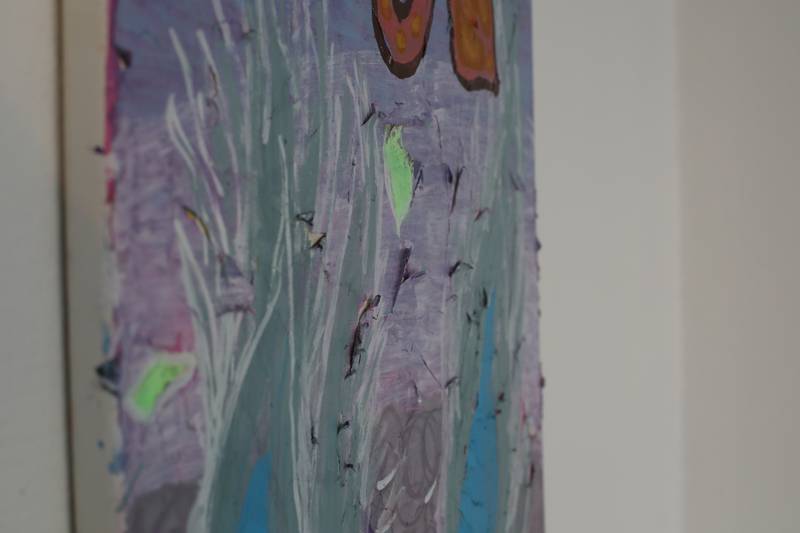

Maija Baijukya, Grief is a White Flame, paper and acrylic paint on canvas, 30 x 40 cm
